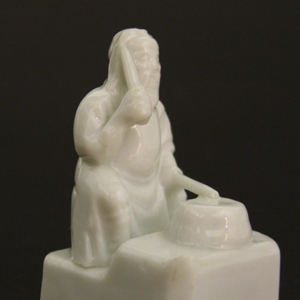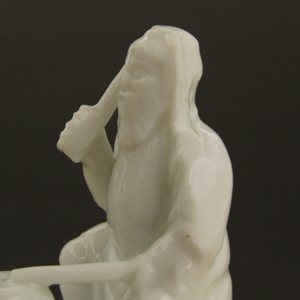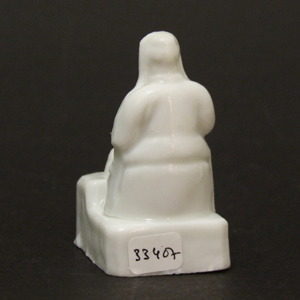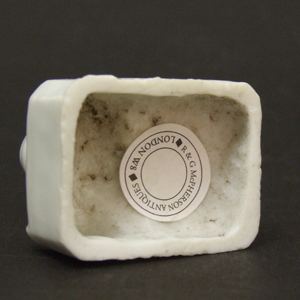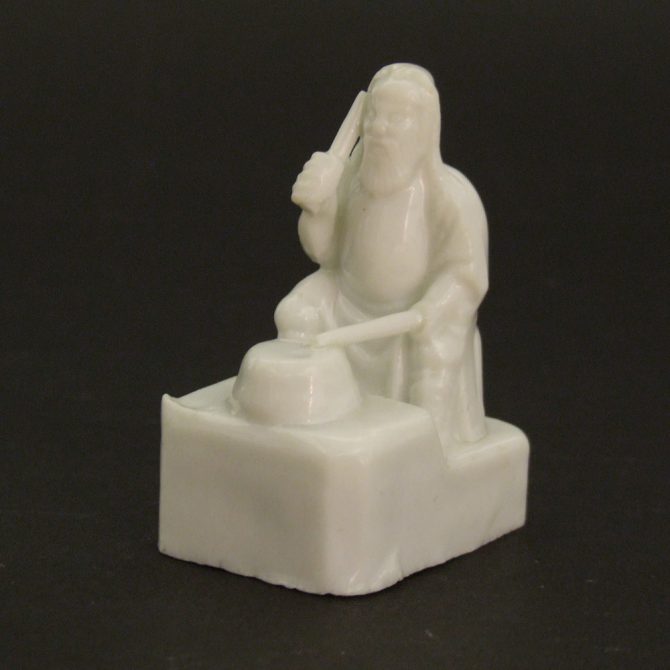
KANGXI 1662 – 1722 Blanc de Chine Porcelain
A Rare Kangxi Blanc de Chine Porcelain Model of a Drummer c.1680 – 1720, Dehua Kilns, Fujian Province. The Man is Depicted in a Seated Position with his Belt Pressed Down by his Mid Rift, he has a Mustache as well a Full Beard.
I am not sure if this is a scholars object that was exported to the West or an object made especially for export to the West. In all probability it was made for export to the West.
SOLD
- Condition
- In Perfect condition. There are two unglazed areas to the side of the base, these clearly correspond to the marks of small fingers used to hold the porcelain while it was being glazed.
- Size
- Height : 6 cm (2 1/4 inches).
- Provenance
- Robert McPherson Antiques or R & G McPherson Antiques The Alan Green Collection of Blanc de Chine Porcelain R & G McPherson Antiques A Private English Collection of Blanc de Chine Porcelain.
- Stock number
- 23407
Information
Objects For The Scholar`s Desk :
The term `Scholar`s object` refers to something used by a Chinese scholar in his studio, it includes everything from tables, screens and chairs to the smaller objects found on the scholar`s desk. The material used for these desk objects varied greatly, from bamboo to stone, ivory, wood and metal, but ceramics were by far the most commonly used material, even though ceramics rated lowest in ranking of importance. Bamboo, ivory or wood might not be durable enough and metal was sometimes too heavy but ceramic objects could be thrown or moulded in to an infinite variety of forms. Most of the objects made centered around the functions of writing and painting. Brushpots of different sizes and shape were needed to take the various types of brush, the same applies to brushrests. Water droppers for adding water to dry solid ink when it was ground on an inkstones, as well as the inkstones themselves were all needed, as were water-pots and brushwashers, all of these could be made of porcelain. But these were not merely functional items, they conveyed symbolic mean, often enhancing scholarly virtues and the wish for longevity. They were meant to inspire the writer, poet and artist but it is clear they could also exhibit a great sense of humour, sometimes having almost child like quality. Objects for the scholar`s desk were made out of many different ceramic bodies, during the Song Dynasty (960-1279) Qingbai porcelain was most frequently used, often in moulded form but by the late 17th and early 18th century biscuit porcelain with coloured glazes such as green, aubergine or turquoise were popular. It appears highly likely some of these objects were shipped to Europe at the time, especially France and were they were seen as whimsical novelties divorced from their true scholarly function.
